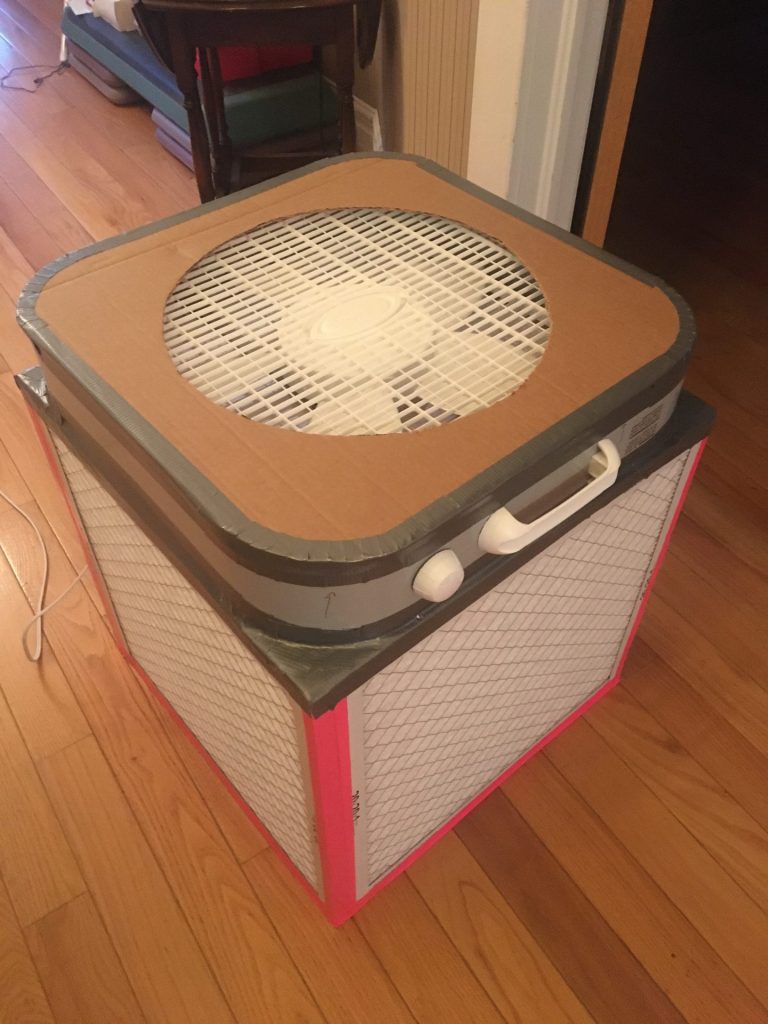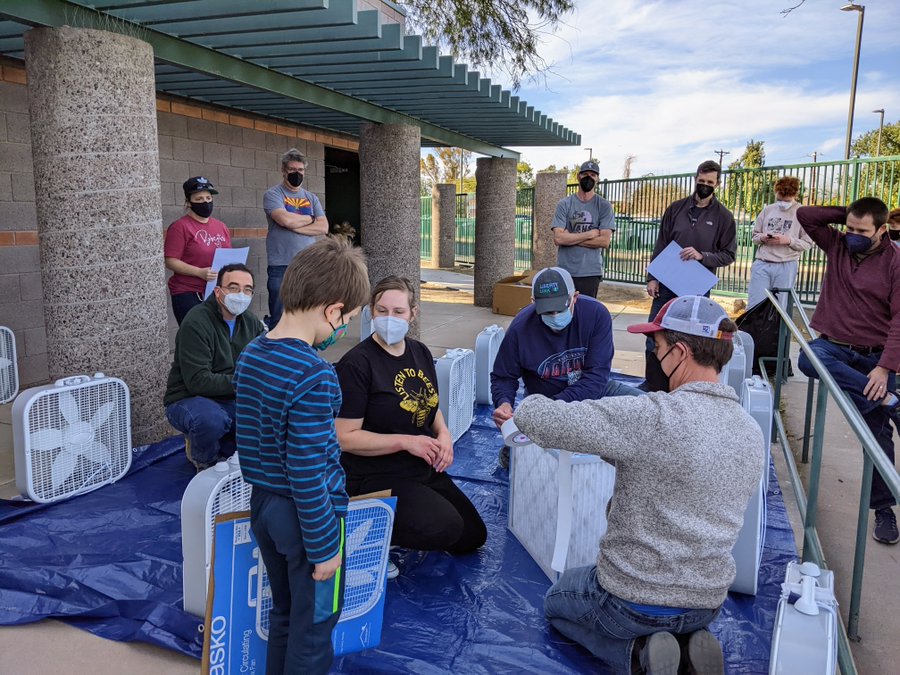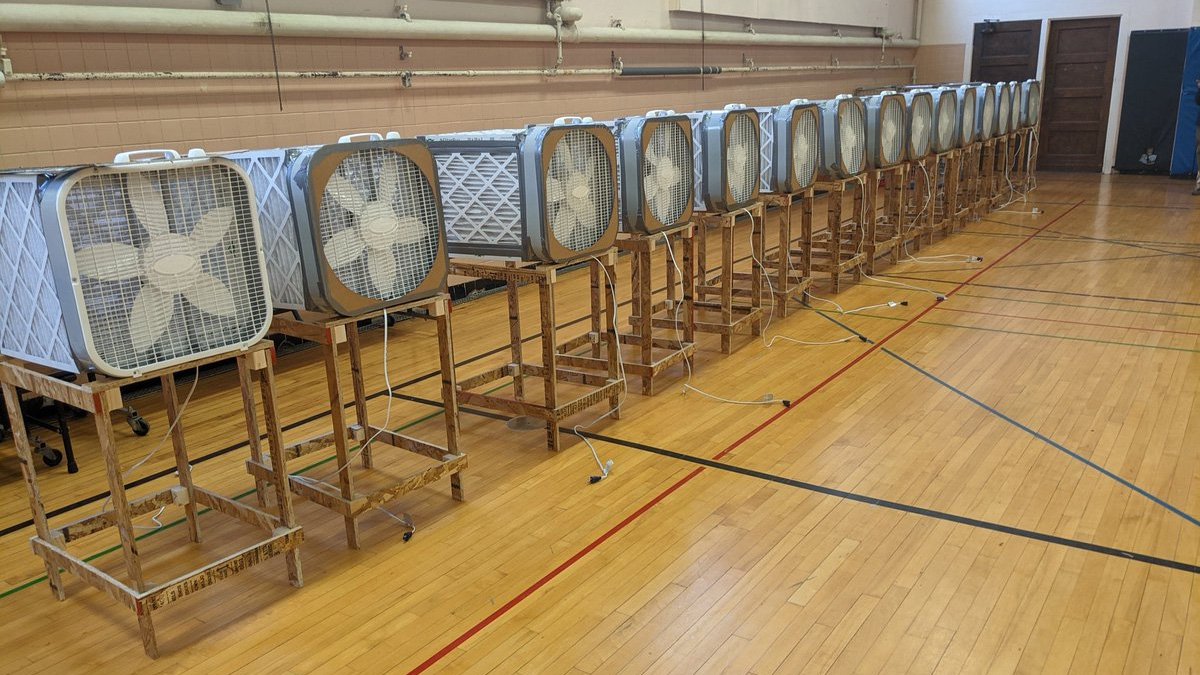Before Covid, did you ever give a thought to the ventilation efficiency in your kid’s classroom, or in your office? For most people, the answer would probably be “venti-what?”
But thanks to the pandemic, air quality has become a hot topic, even an urgent one. And now some experts hope that the changed attitudes could lead to important discussions about indoor air quality standards in general. We have such standards for air outside — why not for the air many of us actually breathe much more often, in our homes, schools, and workplaces?
The Occupational Safety and Health Administration (OSHA) does not set any standards for indoor air quality, amazingly, and the agency website notes that California and New Jersey are the only states that have established such standards.
But more and more discussions about the need for indoor air quality standards are emerging, driven largely by the intense efforts nationwide to improve ventilation and filtration to reduce the spread of Covid. While some large organizations were able to accomplish this using existing, high-end HVAC systems, it was the increased popularity of do-it-yourself air filtration devices during the pandemic that really changed the game for the general public.


Shortly after Covid started spreading, environmental engineer Richard Corsi at the University of California, Davis, and Jim Rosenthal, CEO of an air filter provider called Tex-Air Filters, shared an idea for an affordable unit anybody could build themselves that could help purify air in a room. Now known as the Corsi-Rosenthal box, the device is a simple cube. One side is a box fan, while the other faces of the cube are high-quality air filters like those consumers use in home heating systems, which can be readily purchased at hardware stores. The box is typically held together, effectively, with duct tape (see illustration). Such a device can capture viral particles and make circulating air safer for occupants. Air gets sucked in through the filters by the fan, which then pushes it back out into the room.
During normal times, a jury-rigged air purifier would not exactly capture the imagination. But in the pandemic, Corsi-Rosenthal boxes enabled people to make classrooms, homes, and offices considerably safer for as little as $50. Simple assembly videos made the evening news, and at some universities students rallied to build dozens of boxes and give them away to local businesses and schools. At UC Davis, engineers tested these boxes and found that for $75 they performed as well as commercially available high-end air purifiers that cost three times as much. Since then, Rosenthal released new designs for a smaller version of the device that would be effective for bedrooms, hotel rooms, and other small-footprint areas.
Recent surveys from Honeywell and Panasonic find that many people are thinking about air quality. Honeywell’s survey asked 3,000 office workers around the world about their workplace conditions; in the U.S., 82% of respondents said they became more worried about indoor air quality due to the pandemic. The Panasonic survey of homeowners and homebuilders revealed that many were not familiar with the risks of poor ventilation or filtration. According to a statement from Kevin Smith, a general manager at Panasonic Canada, “Many people are not aware that indoor air can be five times more polluted than outdoor, which could lead to serious and life-threatening health risks.”

On a recent podcast with Chris Hayes at MSNBC, environmental engineer and air quality expert Linsey Marr from Virginia Tech talked about how Covid is fueling discussions about the need for cleaner indoor air. “We have outdoor air quality standards in many countries worldwide [but] we spend on average 90% of our time indoors,” she said. “If we’re worried about health, we should be thinking more about the indoor air. It’s not just for the respiratory virus pandemic.”

A study conducted at the University of Maryland prior to the pandemic compared two dorms, one with good ventilation and the other with poor ventilation. Students were tracked over time, and results showed substantially higher rates of respiratory infections in the badly ventilated dorm. According to Marr, other studies have shown that cleaner air in schools leads to improvements such as higher test scores, lower absentee rates, and fewer asthma attacks, among others.
Marr noted that there’s very little information available about indoor air quality, so setting a few standards for known pollutants and beginning to take regular measurements would be important first steps.
Given the lack of standards for indoor air quality, even small steps would represent real progress. Improving air quality could not only reduce the spread of infectious diseases such as Covid and the flu, but it could also offer a leap forward in public health by reducing the burden for many who have asthma or other respiratory problems.
















